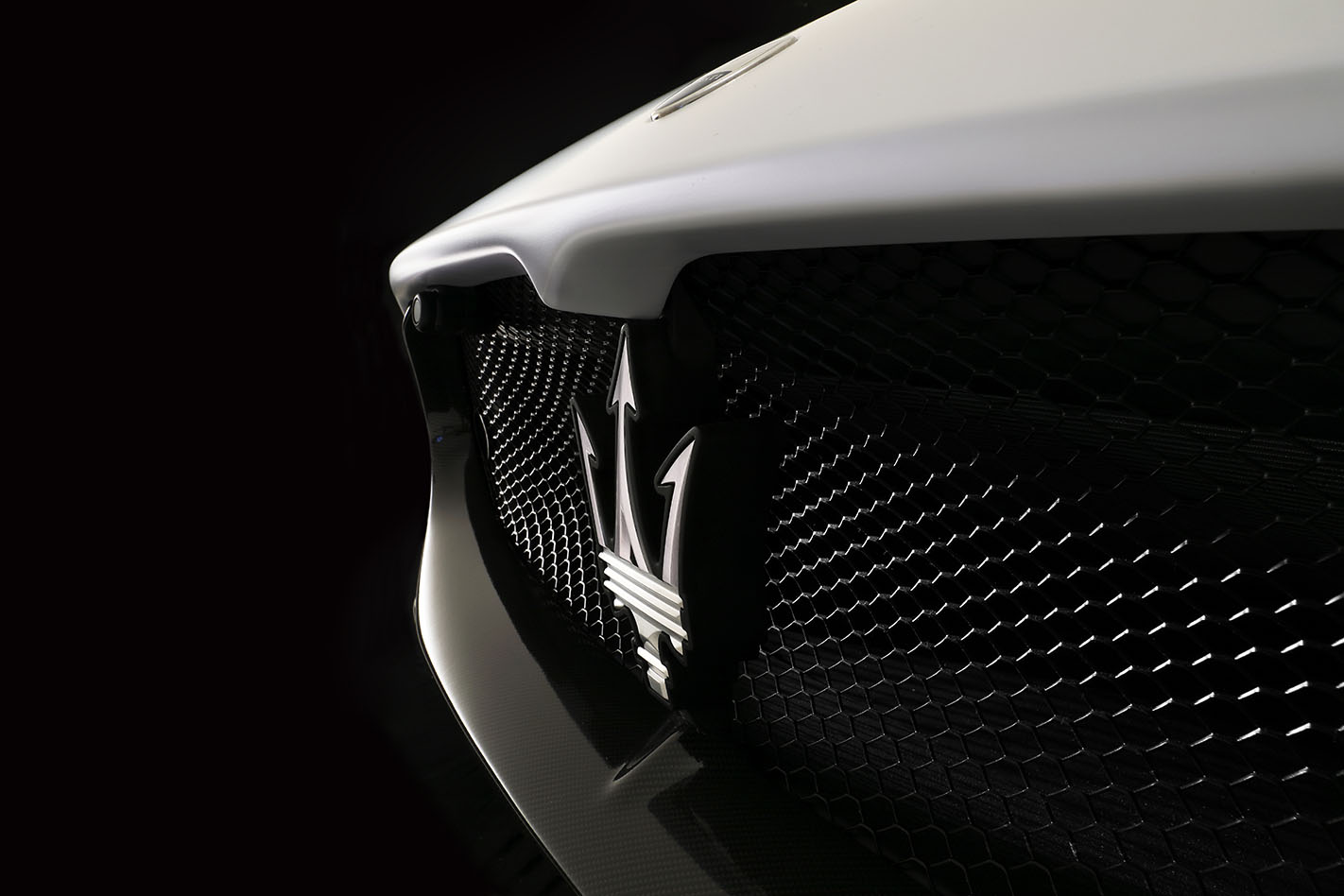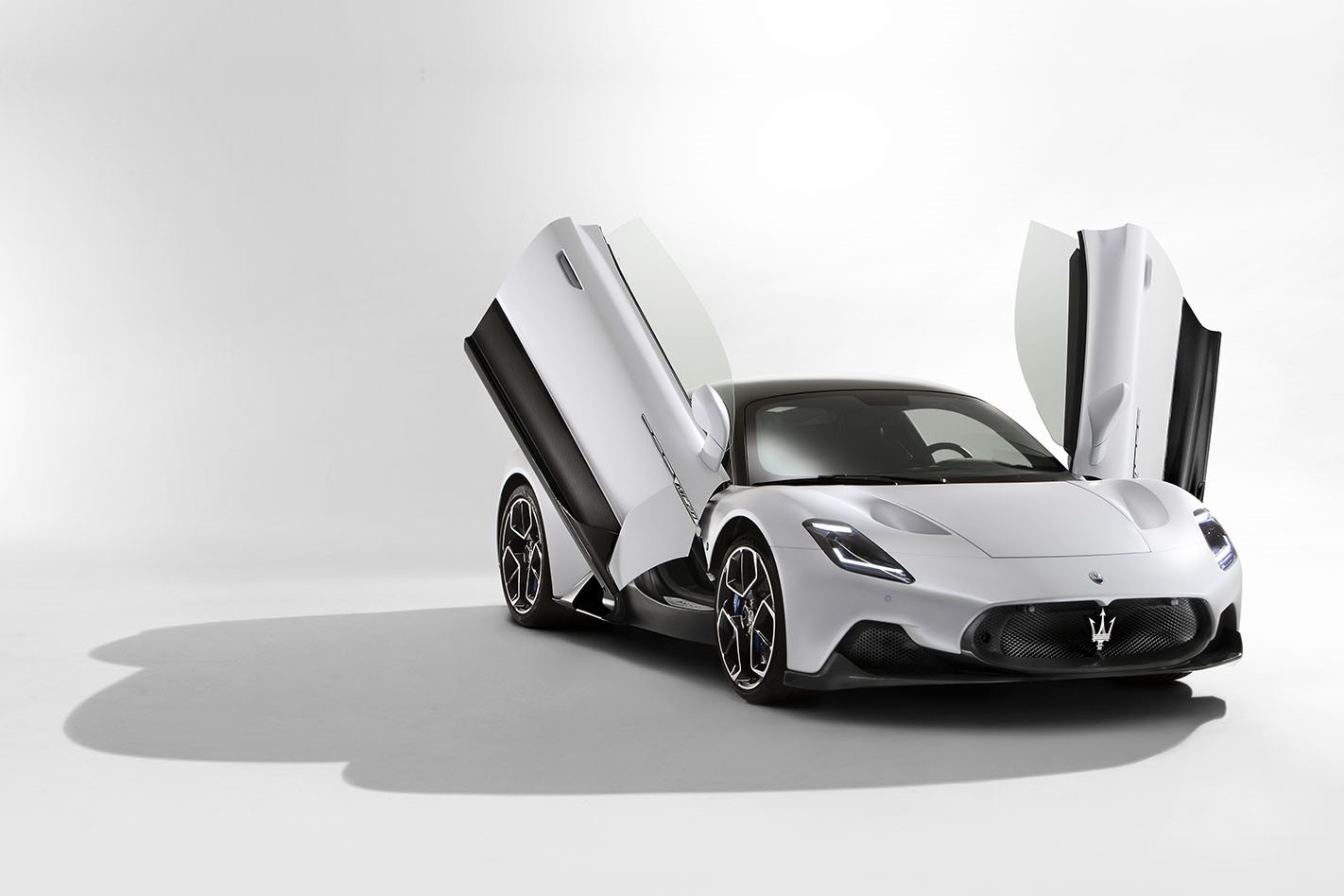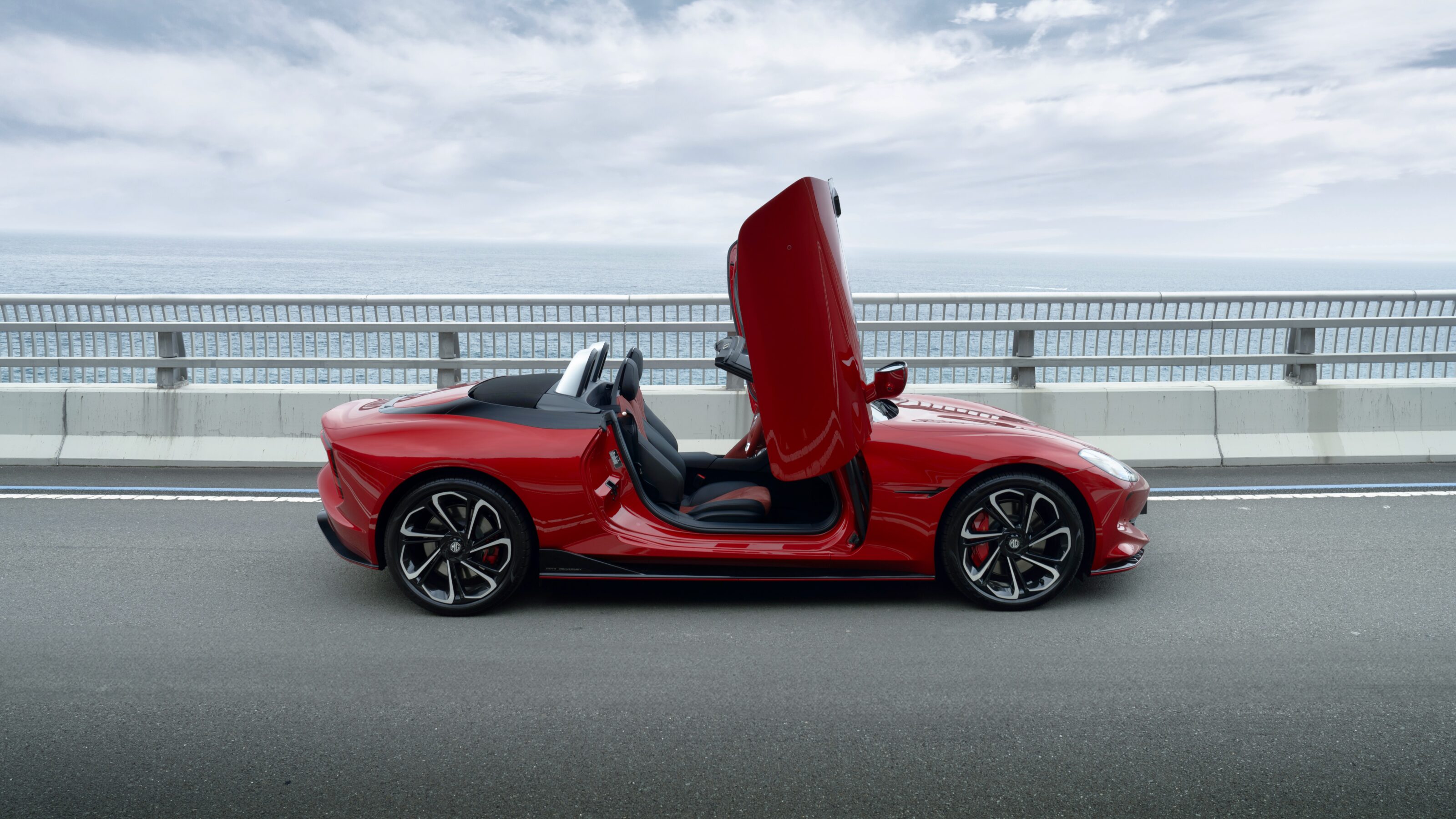Maserati’s emblem, the trident, is a three-pointed weapon, so it’s fitting that the MC20 you see here is the first of a trio. This beautiful mid-engined coupe, powered by a hugely powerful new Maserati-made twin-turbo V6, is the brand’s first supercar since the 2004 MC12 and is likewise destined for the racetrack as well as the road.
It will be followed, predictably, by a convertible. But the final instalment, due in 2022, is something truly startling; it’s a pure electric MC20, and the EV will be quickest of them all. Project MC20 signals the opening of a new era for Maserati, one in which the brand will embrace electrification as it expands and renews its model line-up.
Neither Maserati nor its parent company, Fiat Chrysler Automobiles, have great track records of sticking to plans.
It’s possible this tendency may be reduced after the completion next year of the mega-merger of FCA with PSA Group of France, makers of Peugeot and Citroen. The corporation, to be named Stellantis, will be the world’s fourth-biggest car maker by volume.
Whatever the future brings, the genesis of Maserati’s new supercar is a very FCA kind of story. The first hint that something like the MC20 was in the works came in June 2018. The event was FCA’s last capital markets day with Sergio Marchionne at the helm, held at the company’s Balocco proving ground outside Turin. The charismatic CEO died less than two months later.
FCA’s capital markets days, which only come around every four or five years, are must-attend events. Organised primarily to convince investors and market analysts that FCA stock is worth owning, the company’s leadership presents detailed, brand-by-brand plans for the coming half decade.
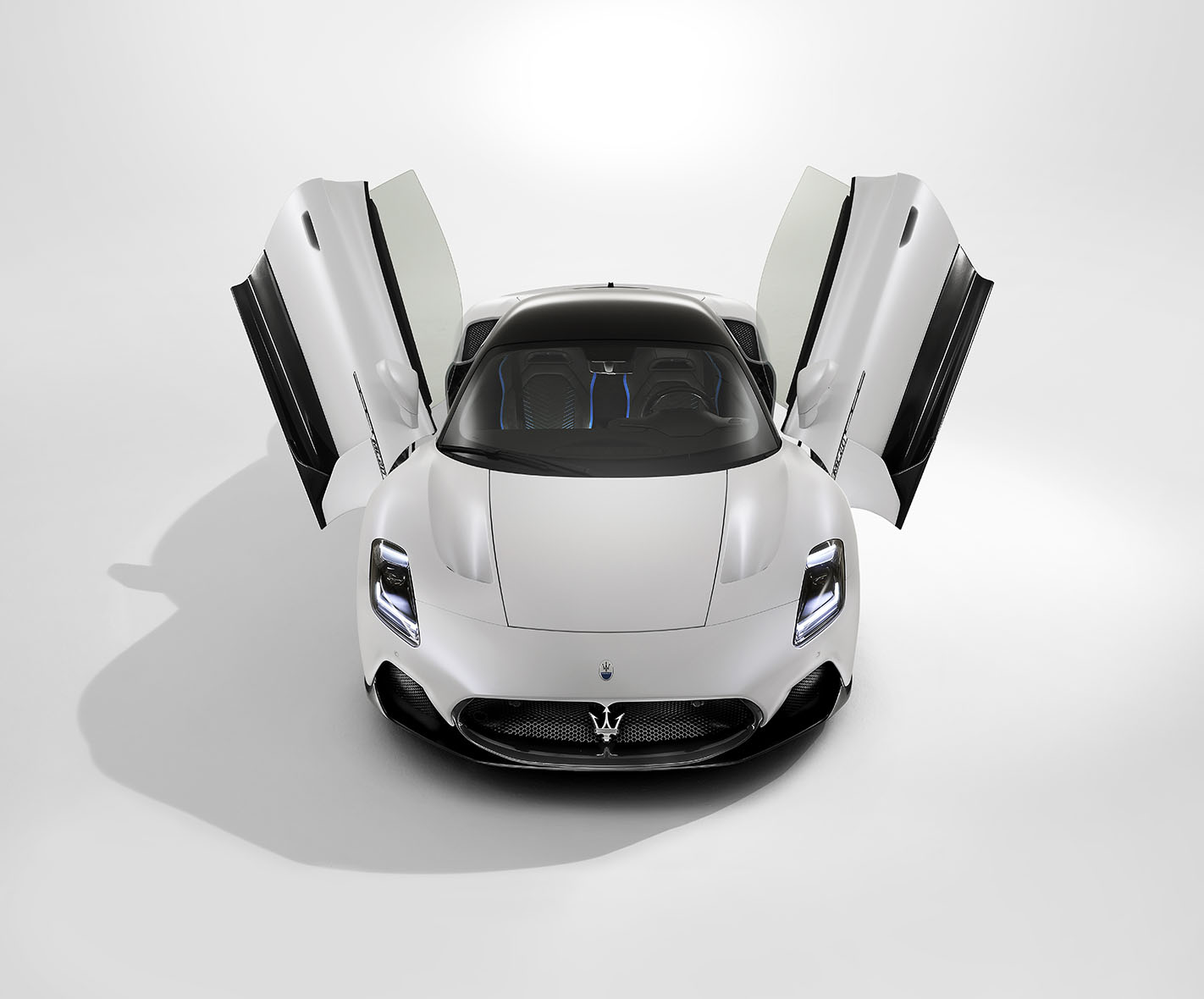
One of the big surprises that day, aside from how unhealthy Marchionne was looking, came in the Alfa Romeo presentation. Included in the product-plan grid for launch before 2022 was the new 8C, a mid-engined supercar with a twin-turbo engine and carbonfibre chassis just like the MC20.
For some reason, and presumably at a very high executive level, the decision was made soon afterwards to take the project from Alfa Romeo. “It was decided to assign it to Maserati,” confirms an in-the-know executive who asked not to be named. The switch was made before serious work on the car began, he explains. “So, no contamination, you could say.”
By March 2019, Maserati exterior design chief Giovanni Ribotta was staring at a not-quite-clean sheet of paper. It showed the car’s hard points, defined by Maserati engineers already working on the MC20 for some time, that the designers would have to clothe.
Ribotta and his team had to hurry. They had a design-freeze deadline nine months away, before Christmas 2019. He says the Birdcage 75th concept, created by Pininfarina in 2005 to celebrate its own important anniversary as well as Maserati’s Tipo 60 and 61 racers of the 1960s, was one important source of inspiration. The designer wanted a similarly clean look for the MC20. One of the team that helped shape the car was a modeller who, as a young man, had worked on the Lamborghini Countach. Now in his 70s, this veteran helped give the final, full-size model of the MC20 its finishing flourishes.
Ribotta, whose previous Maserati credits include the Levante SUV and the lovely Alfieri concept coupe from 2014, says he made a pact with the engineers working on the project. He wanted the upper part of the MC20 to express dynamism and purity. In practical terms this meant no obvious aero-aids up top, and air intakes so subtly integrated that they’re invisible from some angles. In return for enabling design’s ideas, the aerodynamics team could have complete authority when it came to shaping the underside of the MC20.
It was a good deal Ribotta made. The MC20 is elegantly proportioned, cleanly detailed and essentially Italian. There’s a clear distinction between the upper section and the technical lower part, the designer points out. Visible carbonfibre marks the low-down territory of the aerodynamicists, while colour coats the designers’ zone. Opening the MC20’s butterfly doors takes the effect a step further, exposing plenty more structural carbonfibre to view, as well as Alcantara and leather.

The fully enclosed underside of the car is, in its own way, equally impressive. A system of vortex generators and vent channels, along with the large rear diffuser, combine with the humped shape of the underbody to create high downforce without excess aerodynamic drag.
Six MC20-specific paints in white, black, grey, blue, red and yellow, were designed by Maserati’s colour and materials department. They’ll be applied in the company’s new paint shop. Previously, bodies of Modena-made Maseratis were transferred to Maranello and put through Ferrari’s paint shop.
All three versions – coupe, convertible and EV – will utilise the same carbonfibre chassis. This central structural element of the MC20 was engineered by Maserati, then developed for production by Dallara, the well-known Italian designer and constructor of sports and race cars. It will be manufactured by automotive and aerospace composite specialists TTA Adler.
There’s another Alfa Romeo link here. Dallara and TTA Adler played similar roles in the creation and production of the 4C sports car. And don’t forget that this small but flawed gem was assembled by Maserati, in its hometown factory in Modena, from 2013 to 2019.
Made from 57 moulded carbonfibre pieces, this new monocoque chassis will be used in all three MC20 versions. But there will be minor differences in fibre distribution within those parts for each of them. These adjustments are designed to give the convertible chassis essential torsional stiffness and the heavier EV the greater overall strength it needs.
To make room in Modena for the MC20 assembly line, production of the old Gran Turismo and Gran Cabrio stopped in 2019. In effect, Maserati has folded the stillborn 2014 Alfieri concept into the new Gran Turismo and GranCabrio, which were slated to appear in 2015. The new models will be made in Turin, site of FCA’s Italian centre for EV production.
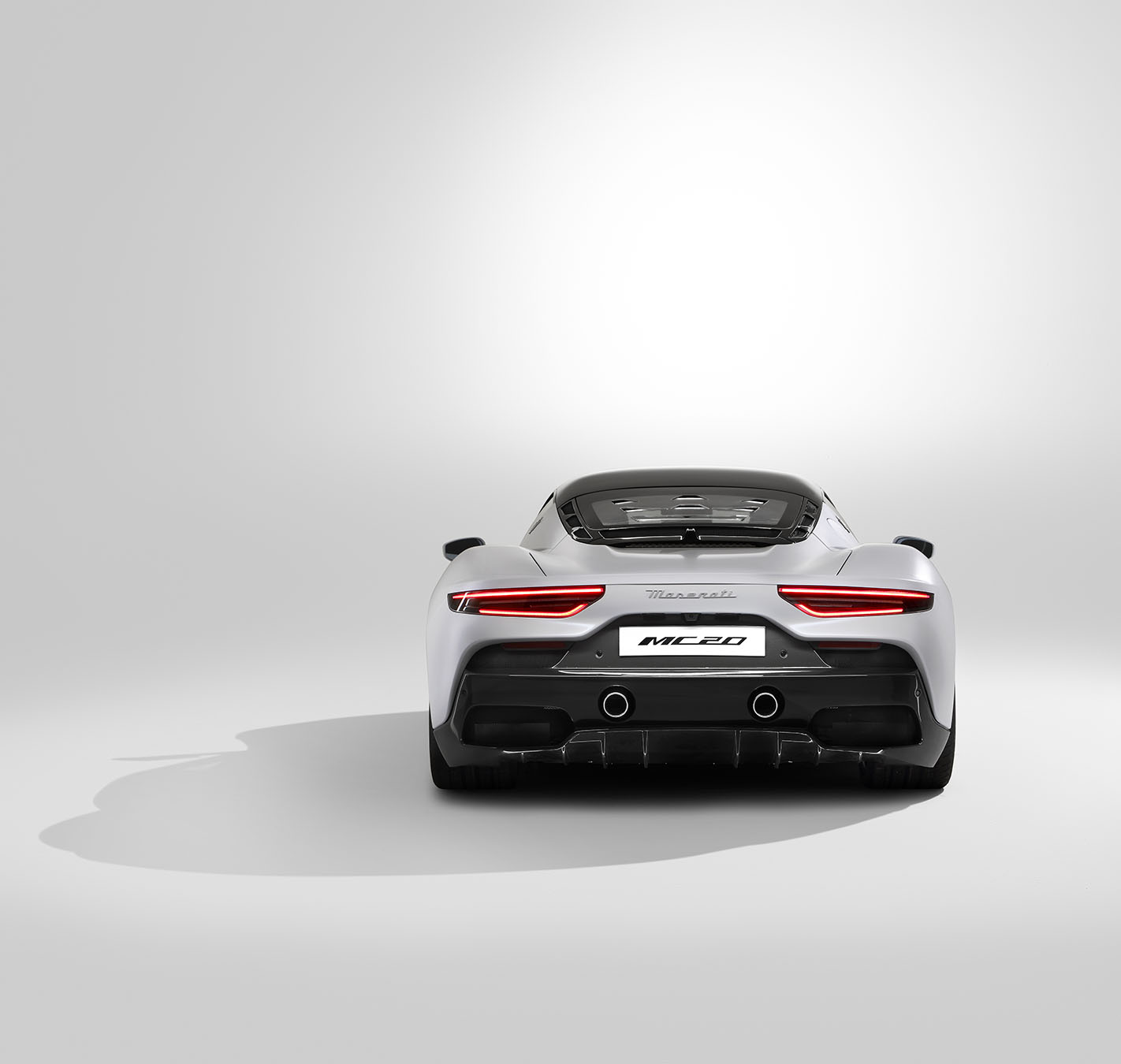
Though it’s a very long time since Maserati created anything like the MC20, it’s longer still since it manufactured its own engines. The last one entirely designed and built by the company was the twin-turbo 3.2-litre V8 of the 3200GT, produced in Modena from 1998 to 2001.
Since then, Maserati has relied heavily on nearby Ferrari. With few exceptions, like the 3.0-litre turbo-diesel V6 of the Levante and the 2.0-litre turbo four of the Ghibli Hybrid, Maserati engines have been manufactured at Maranello. This arrangement won’t end abruptly with the arrival of the MC20, but Maserati’s supercar will have a Made in Modena engine. Nettuno – Italian for Neptune, ancient Rome’s trident-wielding god of the sea – is the name of this twin-turbo V6.
Nettuno’s maximum power – 463kW at 7500rpm – is a massive number for a 3.0-litre engine. What extracting more than 150kW from each litre of capacity means is best understood by making a comparison. The specific output of the Maserati engine is 13 percent higher than the Porsche 911 GT2 RS’s twin-turbo 3.8-litre flat-six. Margins of superiority like this don’t happen by accident…
The Nettuno is a dry-sumped engine with a 90-degree vee angle. Perhaps it’s only coincidence, but its bore and stroke dimensions happen to match the new twin-turbo 4.0-litre V8 of Ferrari’s SF90 Stradale. With its turbochargers mounted outboard of the engine’s vee, the Nettuno at first appears to stick to a traditional Italian high-performance recipe.
It’s deep in the combustion chambers that the secrets of the Nettuno’s power lurk. Enclosing each cylinder’s central spark plug is an F1-style passive pre-chamber. This close-fitting copper-alloy sheath has a series of tiny holes that connect the small pre-chamber to the much larger main combustion chamber. Plasma jets spurt from the holes when the central plug fires, speedily igniting the fuel mixture in the main chamber. This boosts the engine’s high-load power output and efficiency; a second, side-mounted plug without pre-chamber handles low-load running.
Nettuno-powered versions of the MC20 feature an eight-speed dual-clutch transmission. Maserati promises a sub-3.0 second 0-100km/h time, but hasn’t yet confirmed if this is in part down to AWD, or even hybrisation. The EV definitely will be eAWD, a Maserati engineer confirms. Its three motors – two at the rear for effective torque-vectoring and one at the front is the logical layout – will make it fractionally the quickest variant from 0-100km/h. Like the Porsche Taycan, the MC20 EV will have an 800-volt battery pack, and a range of more than 380km is promised.
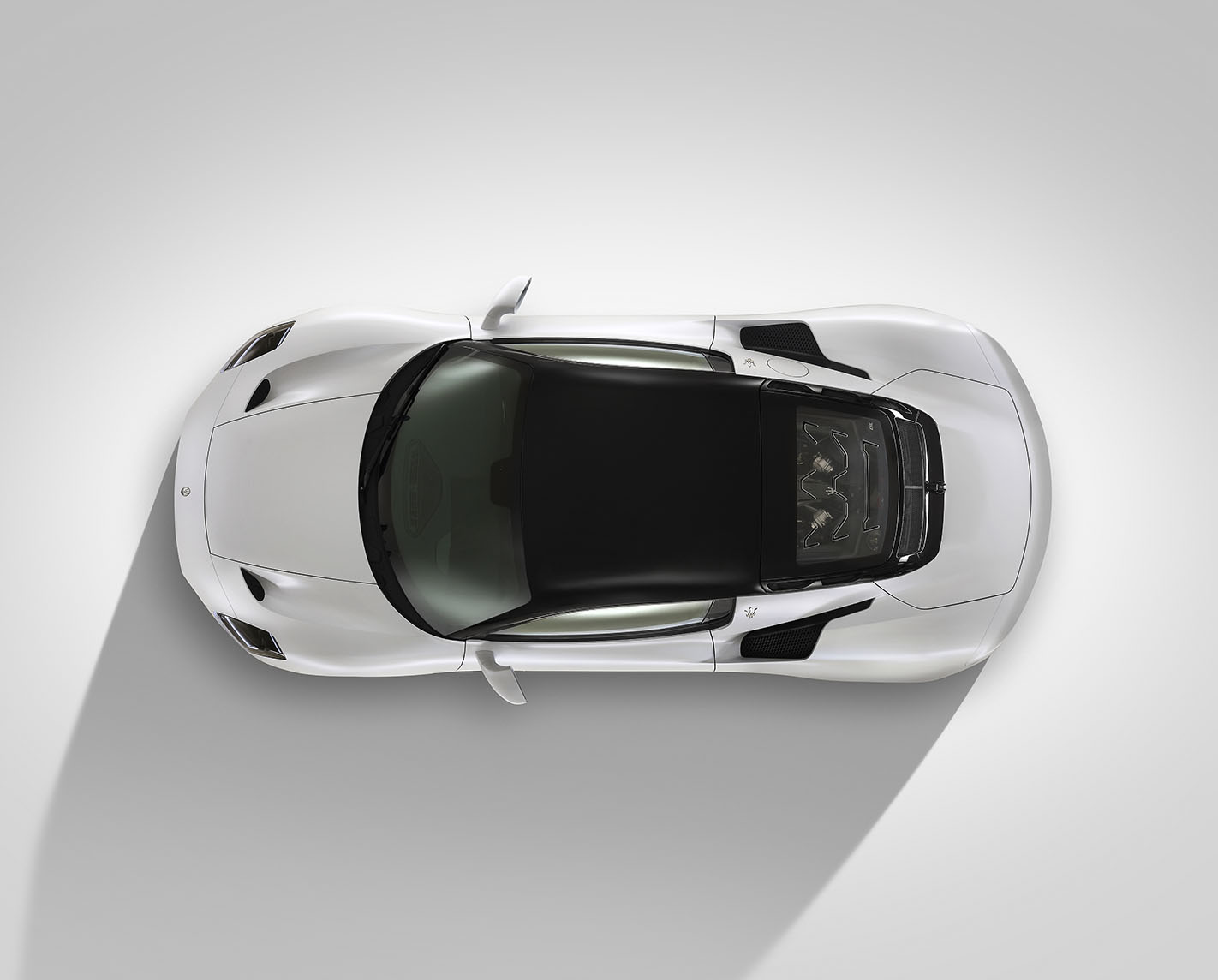
Early Nettuno drivetrains were road-tested in heavily camouflaged and bulked-up 4C-based development mules. Maserati released teaser shots of these late last year, leading to a flurry of inaccurate media speculation that Maserati’s then-nameless new supercar might be some kind of evolution of the little Alfa.
Now we know the MC20 is nothing of the kind. It’s a deftly designed and unexpectedly innovative car that’s also a true Maserati. But does it truly signal the opening of an excitingly successful new chapter? Only time will tell, but what is certain right now is that Maserati needs a change in strategy.
From a brief peak of more than 50,000 global sales in 2017, more than half of them Levante, the trident brand slumped to fewer than 20,000 in 2019. Maserati clearly believes that a timely embrace of electrification in combination with renewal of its line-up offers the best chance to flourish.
With the MC20 as a bright-shining halo for the brand, Maserati’s fervent prayers for sustained success must have some chance of being answered…
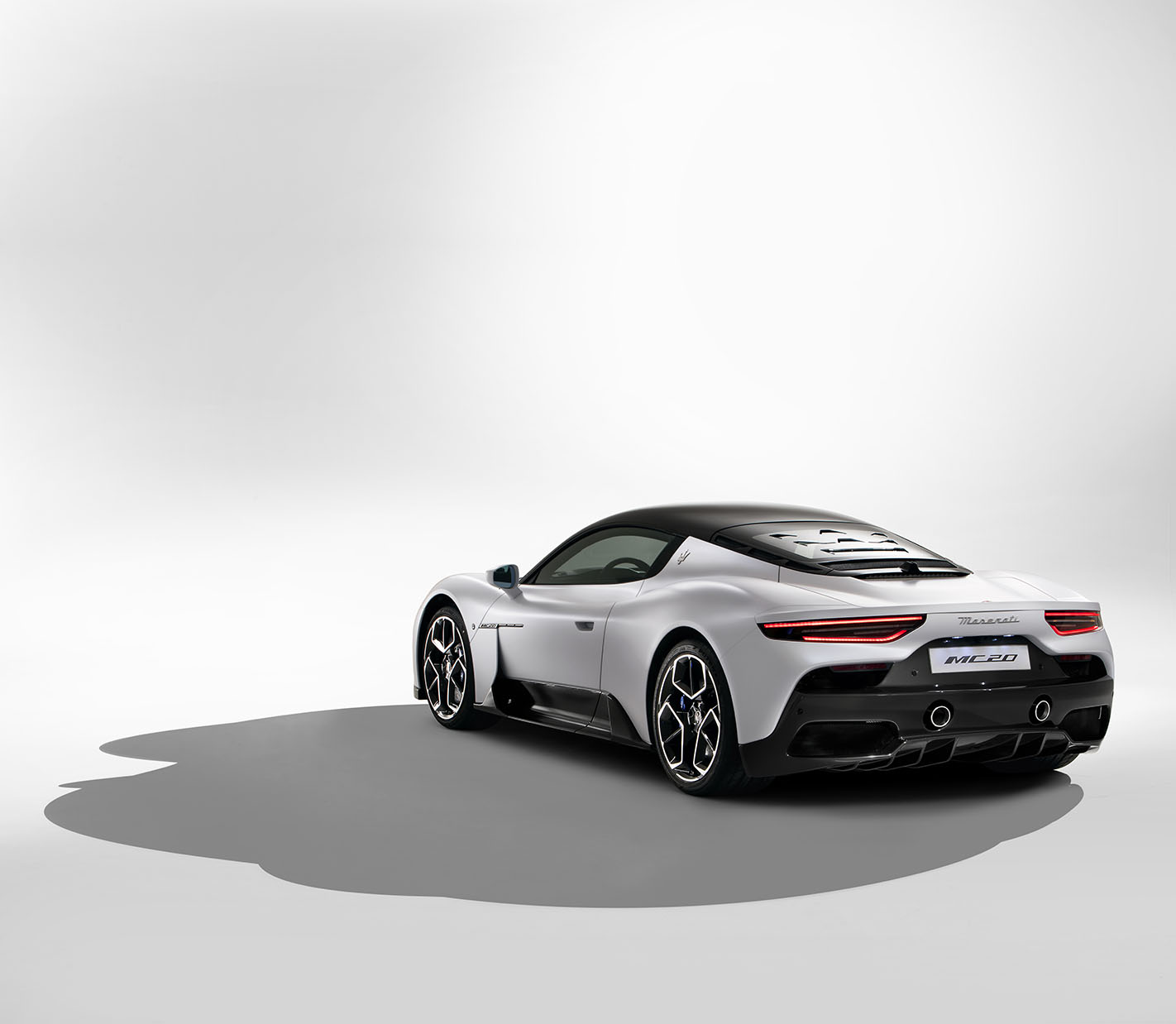
NETTUNO: MODENA VIA MARANELLO?
Maserati touts the Nettuno V6 as all-new and 100 percent its own work, but a closer look at the engine reveals some striking similarities to the Ferrari F154 V8 engine and, by extension, Alfa Romeo’s 690T V6 as seen in the Giulia QV.
Like the F154, the two banks of cylinders are reposed at a 90-degree angle with an 88mm bore and an 82mm stroke. The rev limit of 8000rpm is a match for the F154-engined SF90 and the 1-6-3-4-2-5 firing order is identical to the Alfa.
While the heads and thus the compression ratio are claimed by Maserati, remove those and you see the cylinder block is clearly related to or, if we’re being kind, very heavily influenced by the F154. Cylinders, liners, fluid galleries and stud patterns look identical to the Ferrari, but with a cylinder lopped off each bank. Even the oil filter fit is the same.
Maserati has been smart to fit off-shelf items from elsewhere in the Stellantis group’s stable, with the air conditioning compressor bearing part number 50537067, again identical to the hot Giulia. Look really closely and you’ll even be able to spot Alfa Romeo’s badge on this part. Likewise, the Denso-branded alternator, part number 670050552, is also used on Alfas.
Even the ingenious twin-spark and pre-chamber design of the head could have Maranello’s imprimatur on it. The patent for this technology lists Fabio Bedogni as the lead inventor. Not familiar with Mr Bedogni? He’s worked at Ferrari since 2009 on engine development and is still there.
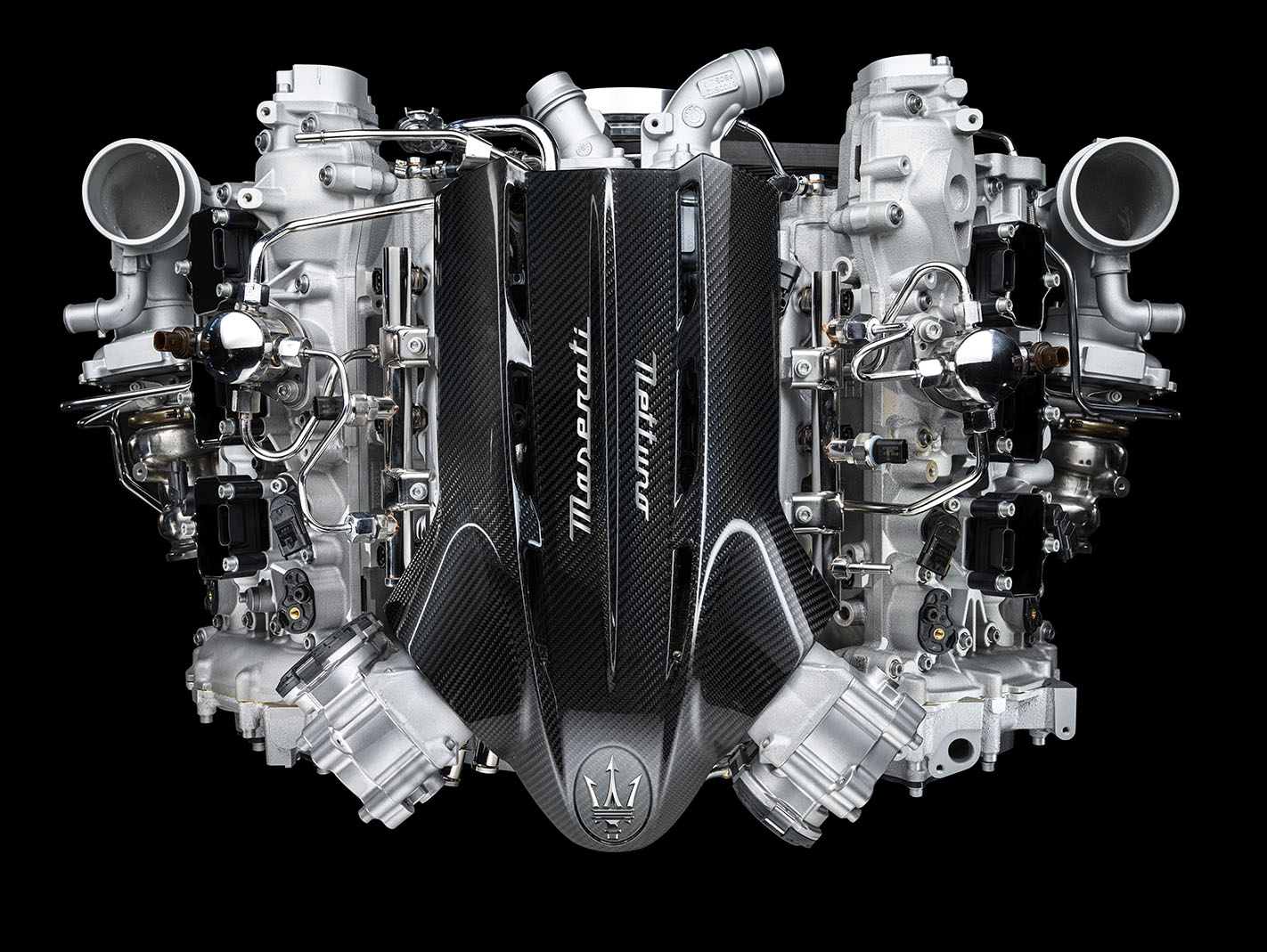
BACK TO THE GRID
The MC20 will fill the shoes left by the MC12 in multiple ways. Maserati’s first mid-engined supercar since the Enzo-based cult hero will also be its first factory-backed racer in 16 years. The MC20 will see the brand return to the global motorsport stage but Maserati hasn’t confirmed in which category. Our bet is GT3 or GTE – the latter allowing a return to Le Mans.
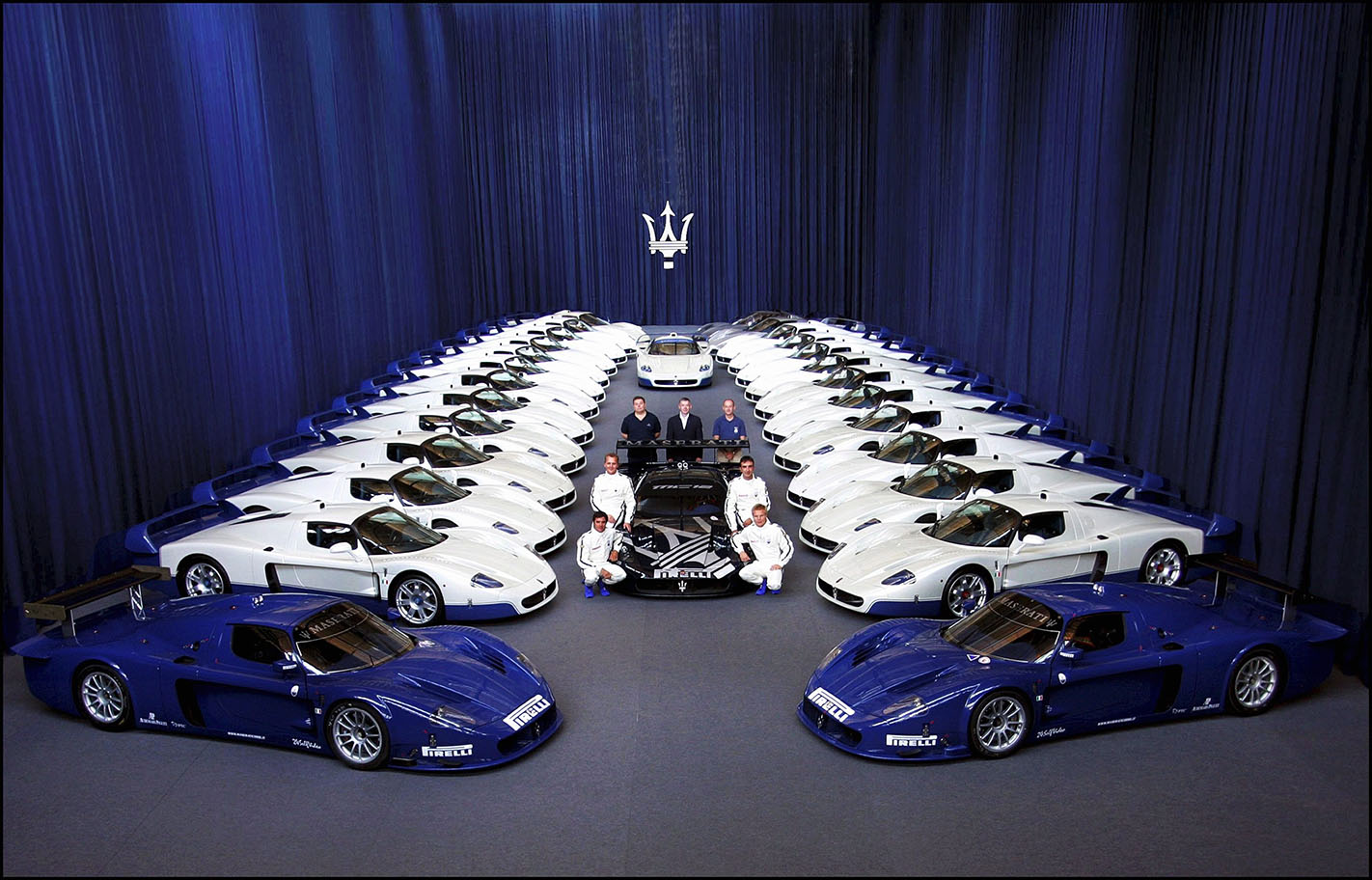
2021 MASERATI MC20 SPECS
Engine: 2992cc V6 (90°), dohc, 24v, twin-turbo
Max power: 463kW @ 7500rpm
Max torque: 730Nm @ 3000-5500rpm
Transmission: 8-speed dual-clutch
Weight: 1470kg
L/W/H/WB: 4669/2178/1224/2700mm
0-100km/h: sub-3.0sec (claimed)
Economy: 11.5L/100km (estimated)
Price: $420,000 (estimated)
On sale: 2021
